Media | Articles
The Graham Hollywood: A Curious Cord Cousin Born of Calamity
Even if you’ve never heard of the Graham Hollywood, it might look familiar. That’s because the lovely art deco car you see here is the best-dressed zombie in the automotive universe. It was created from the ashes of the Cord 812 when a down-on-his-luck auto biz veteran, Norman de Vaux, discovered that the Cord’s tooling was being fire-saled, along with the rest of the contents of Cord’s Indiana factory, in the summer of 1938. De Vaux then pitched two troubled automakers, Hupmobile and Graham, on building a new car based on the old bones.
In theory, this sounds like a fantastic idea: Buy a gorgeous low-production design from a failed company on the cheap, make it simpler and lighter, and mass-produce it. For de Vaux, it was a potential ticket back to the big time, and for Hupmobile and Graham, a lifeline. In practice, turning an expensive, complex front-drive car into a cheap rear-drive one proved much, much harder than anybody anticipated.


In an alternate universe, the plan worked out, but in this one, the Hupmobile Skylark and Graham Hollywood ended up being the last cars these makes ever built. Even superfans aren’t sure how many were made, in part because neither firm was keen to advertise just how few cars they were selling toward the end. Marque experts peg production at approximately 1378 Hollywoods and 380 Skylarks, making them rarer than the more famous Cord, but not necessarily more valuable.
The car itself, at least the supercharged Graham version, was a pretty good vehicle. The story of how it was created is a wild tale featuring a who’s who of old-time Detroit players on a last-chance power drive.
Norman de Vaux and the Undead Cord
Like the earlier L29, the Cord 810 landed like a thunderbolt. It immediately captivated the public when it debuted at New York’s Waldorf-Astoria in November 1935. The coffin-nosed styling, created by Gordon Buehrig with helpers Alex Tremulis and Vince Gardner, was far more radical than the L29 had been six years earlier. The V-8–powered, unibody front-driver was a technical and stylistic tour de force. But in Buehrig’s words, uttered decades later, Cord’s engineers had wasted critical time during the design phase by repeatedly changing and periodically abandoning it.
Marketplace
Buy and sell classics with confidence

It was a complex and underdeveloped car. Early examples had many engineering and quality bugs. Beyond that, it was expensive (to make and buy) and launched into a depressed market where many customers were increasingly wary of buying potential orphan cars. Thanks to the Auburn-Cord-Duesenberg combine’s shaky finances, that’s exactly what the Cord became when the money ran dry in 1937.
Meanwhile, Norman de Vaux was trying to get back in the game.
A famous cyclist in his youth, de Vaux became a Cadillac dealer in San Francisco in 1903 and eventually became a hugely successful distributor of Auburns, Buicks, and Chevrolets. He worked closely with Billy Durant to establish Chevy’s first West Coast factory in 1916, and later, he followed Durant to his post-GM empire. A multi-millionaire by 1921, when Durant’s second empire crumbled de Vaux bought the remains, founding his own make in 1930 with racing and aero-engine designer Elbert Hall.
De Vaux’s car was good, but his timing wasn’t. The 1931 DeVaux 6/75 was a 1930 Durant with a pretty facelift from designer Alexis de Sakhnoffsky and a Continental-built inline-six designed by Hall. It sold well at first, but the Depression killed it, and the company went bankrupt in February 1932, costing de Vaux most of his personal fortune. Continental took over the company and rebranded the car as its own, while de Vaux sold off his home and its furniture and took a job managing Willys-Overland’s West Coast sales.
In 1934, Continental gave up on car production and, incredibly, sold the factory back to de Vaux. However, without the funds to build anything, he eventually sold the plant to GM. In 1936, he proposed an export-only small car, the De-Vo, to be built by a partner in Maryland, but by 1937 this project was dead, too.
In early 1938, he found out about the Cord sale. From the company’s receiver, he learned that for just $45,000 (about $1M today), he could own all of the 810/812’s tooling and jigs. The car’s looks still wowed the public even if it had been a market failure. De Vaux could see how engineering a cheaper, simpler version could be a golden ticket. He didn’t have $45,000 but he knew who might.
The Hupmobile Skylark



De Vaux’s first port of call was Joseph B. Graham, eldest of the Graham brothers and president of their company. While Graham’s Amos Northup–designed Blue Streak had been a big hit in 1932, its success was fleeting, and Graham had struggled afterward despite its cars being known as good performers. In 1938, the firm had just invested $1M in developing and marketing its “Spirit of Motion” design, so it passed on de Vaux’s idea. But on the way out the door, Joe Graham suggested de Vaux talk to the Hupp Motor Car Co.
Hupp was in even worse shape than Graham after mismanagement by, and then a lengthy legal fight with, board member and ex-Ruxton frontman Archie Andrews, who had also wrecked Moon, Gardner, and Kissel. Hupp built no cars in 1937 and relaunched itself in 1938, just in time for a recession. It was on its sixth president since 1934, begging for credit and at the point of selling off factory buildings. De Vaux’s proposal was almost instantly accepted. Hupp would build it, and de Vaux became the firm’s general manager. He’d also earn a royalty of $5 per car.
Hupp president Samuel Davis wrote to shareholders describing the plan as having saved the company $800,000, allowing it to sell this new “Junior Six” for under $1000. It would be powered by a 101-horsepower, 234-cid Hupp “Hornet” L-head six with a conventional rear-drive layout and a three-on-the-tree. It would ride a 115-inch wheelbase, 10 inches shorter than the Cord, and weigh 700 pounds less.
A hastily built, hand-made prototype debuted in Michigan on September 15, 1938, at the Grosse Point Yacht Club, to great acclaim. The motoring press loved it even if the rear-drive layout gave it a street-racer-style rake and the pop-up headlights were gone, but Hupp management wasn’t 100 percent satisfied. They brought in Briggs designer John Tjaarda, who restyled the front end to make it look less Cord-like, and they renamed it the Skylark.

In November, New York auto show crowds mobbed the Hupmobile stand just as they had Cord’s four years earlier. About 6000 Skylark orders poured in, so the company decided to add a convertible and quickly mailed out color brochures. It seemed like Hupmobile had a genuine winner for the first time in years, until it came time to start building cars in quantity.
Hupmobile no longer built its own bodies, so it turned to body supplier Hayes, probably because it had a close relationship with de Vaux. Its Grand Rapids, Michigan, factory was across the street from his old one, and it had built the DeVaux 6/75 bodies.
Once the tooling finally arrived in early 1939, Hayes’ staff quickly discovered that Cord’s complex dies were not meant for punching out low-cost cars. Its unibody comprised many individual pieces, and some parts that looked like one solid stamping, like the roof, were laboriously hand-welded together from many sections.

The production process was so time consuming that Hupp lost $580 on every car, and by August 1939, only 32 Skylarks had been built. All those orders were evaporating, and the end seemed nigh—until de Vaux got a phone call from . . . Joe Graham.
Hollywood Swingin’
Hot rodders and streamline moderne junkies love it today, but Graham’s “Spirit of Motion” quickly proved too weird for the public. Amos Northup died before he could finish it, which didn’t help, and its slow sales put Graham in an even deeper hole, losing $1.9M in 1938. Seeing Hupp’s difficulties and remembering de Vaux’s offer, Graham called him at home and invited him to dinner. After the food, he made de Vaux an offer he couldn’t refuse.

If Hupmobile would allow Graham to take over production and make its own version of the car, with Graham engines and mechanicals, it would build the Skylark for Hupp properly. It would fix the tooling problems that made the car so complex, or at least some of them, and all it asked for in return was a small fee on each car. Graham needed cars to sell quickly, and Hupmobile was at death’s door.
By mid-September, the manufacturing contract was signed, but things were still dire. Joe Graham had to put in $1.3M of his own money to keep the firm going, and it got a $2M loan from the Reconstruction Finance Corporation in late 1939. It still lost $1.3M for the year, and dealers were worried, but the November announcement of the Graham Hollywood, Model 109, was cause for some optimism.

It took six agonizing months to figure out how to build it. Hupp had laid off most of its staff, so just moving the tooling and components over to the Graham factory proved a chore. By March 1940, production still hadn’t commenced, but Graham’s engineers were working to fix the Cord pieces. They greatly simplified the structural stampings and finally made the roof a one-piece unit, but early cars were still cobbled together, and the new tooling only came online gradually.
Graham’s inline-six, built by de Vaux’s old friends at Continental, was also a better motor than Hupp’s “Hornet.” With a water-cooled centrifugal supercharger, it offered 120 smooth and steady horsepower (to a Mercury flathead V-8’s 95), and the Hollywood was a great showcase for it. At 3100 pounds, the Hollywood was light and uncommonly rigid by 1930s standards, with a low center of gravity. It was a genuine performer and even got a power bump to 124 horses for 1941. But it was too late.



To save money, Graham stopped all of its national advertising, instead relying on dealers and media opportunities for promotion. Hupp was in such bad shape that it stopped paying the royalties on the Graham-built Skylarks after only 80 cars and went bankrupt in October. Except for a handful of hand-made ones, the flashy convertible never got built.
In July, Graham stopped the line for 10 days, switching over to building 1941 models early and stopping Skylark production entirely. Even after the updated tooling was engineered, Graham could build only a little over 100 cars a week, and it could only get the price under $1000 by issuing a 93-horsepower non-supercharged version, the Model 113. On September 3, 1940, the line halted forever, though company officials insisted the stoppage was only temporary.

After that, what was left of Graham survived only because of defense contracts, until Henry Kaiser bought it in 1947. De Vaux eventually moved to Arizona and got into mining but never climbed back to the top of the automotive world.
Whatever Happened to the Graham Hollywood?
On deserted back roads outside of Salem, Oregon, Jason Anderson gave me the grand tour of this unusual ’41 Hollywood, which also has an ultra-rare overdrive, one of fewer than 20 so equipped. Just 48 hours earlier, I’d taken a short ride in a 1935 Chrysler Airflow, a car that cleaned up in stock car racing in the mid-1930s. Compared to the light, lithe, and quiet Graham, the Airflow feels like a truck.

Anderson, who runs a local shop called Denwerks Vintage Cars, has helped care for this Graham for the last half-decade and graciously showed it to me after I spied it on Craigslist. It’s intimate inside, much tighter than an Airflow, but it feels surprisingly like a modern car. This car’s history is a bit of a mystery, he explained. It was restored in the 1980s and then sat on display at the Branson Auto Museum until being bought by a Texas collector in 2016 and a local Oregon vintner three years later. Its history before that is entirely unknown.
After riding along with him through Salem’s verdant rolling hills, you’d never guess anything about the cobbled-together nature of the car’s origins. If Graham had been able to build them cheaply or maybe launched it instead of the Spirit of Motion in 1938, it might have had a winner, but it’s doubtful the firm ever could have overcome the complexity of the Cord design.




As it was, buyers were left with exactly what every 1930s car shopper feared: an orphan car, and one for which parts were especially hard to obtain later on. Leftovers were still on sale in 1941, even though Graham was not making cars anymore, but since they were brand new at the time, almost all of them escaped WWII scrap drives. The styling and the Cord connection have always intrigued collectors, who began buying them in the late 1950s.




They’re very rare, with probably fewer than 300 survivors between Hollywoods and Skylarks, but it’s unusual for them to sell for more than about $60,000. They usually trade through clubs, as getting parts is even harder in 2024 and maintaining one of these, as Anderson says, is a labor of love. Still, that’s a bargain for a fun, ultra-rare car that bears the imprint of designers like Buehrig, Tremulis, and Tjaarda.
De Vaux’s idea of a less-expensive Cord wasn’t a winner then, but it certainly feels like one now.
***
Check out the Hagerty Media homepage so you don’t miss a single story, or better yet, bookmark it. To get our best stories delivered right to your inbox, subscribe to our newsletters.

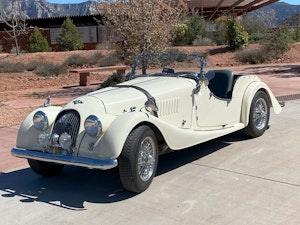
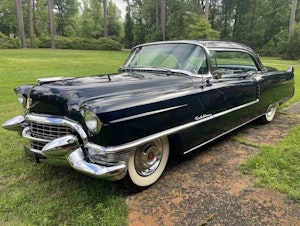

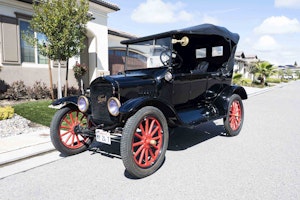
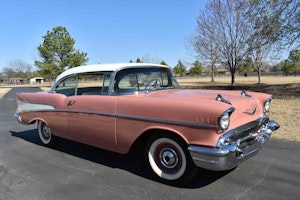

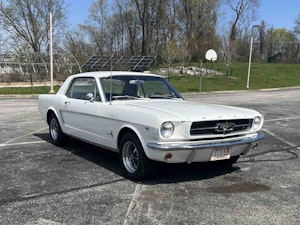
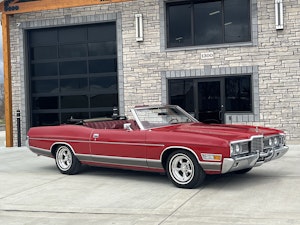































At last, the Cord – Hupmobile – Graham history is explained in a way that it might be understood. That’s excellent!
Thank you
Always interesting cars, not my favorites but they have a pretty distinct look/style.
In the early 70’s I was deer hunting in the wilds of NW Oregon when I stumbled upon a collection of 20’s-40’s vintage cars. They were sitting in a small field in various stages of decomposition.When I first saw them, I thought there were 4 Cords in the group. But upon closer examination I discovered they were all Grahams and at least two had Superchargers. Snooping around someones remote property uninvited could be deadly so I didn’t loiter for too long, going back the way I came from a timber companies forrest. But I always wondered about those cars and how come they looked so much like Cords.
I bought my Hollywood about 5 years ago from a seller in … Oregon! It’s a lot of fun to drive. With the supercharger, it just wants to go, go, go!
1, I like it. 2, from straight on frontal view, definitely looks like a stormtrooper.
In the 1980s a co-worker had spent 10 years restoring a Graham Hollywood. On his second drive he got rear-ended and he didn’t ever repair it. He said that he just didn’t have the heart to do so. I can see why he was so fond of it. I can also better understand why he didn’t rebuild it.
Odd ‘cultural’ footnote: the Hupp connection played a role in the early romance of Ward and June Cleaver.
The biggest hurdle, and why many of these were never produced, is that BOTH of the companies involved were on death’s door when the project started. The complexity of the original Cord dies didn’t help, but neither Hupp nor Graham had the proper finances to launch a new car. If they had things would be different — and they probably would have passed on making someone else’s design over something the designed themselves, no matter how stunning the car was.
There were actually 2 hupp skylark convertibles built. As I was told one was destroyed in a train accident. The other was owned by Norman Weid (sp?) in ct.
In 1947 my older sister, still in HS in North Burnaby, BC, fell madly in love with Ken D. – he courted her in his ’40 Hollywood Graham. They married in 1949, moved on, had two kids and in about a 1967 had a falling-out – (Ken’s fault). By this time he was in LA. I cussed him out, but let him know we were still friends. (I’m the much younger brother!) Ultimately he bought the two Grahams from the Harrah’s collection when they shut it down. By this time Ken was in Boston and took the “keeper” to his restorer asking him to make it “perfect”. Answer, why?? This is how I turn them out! But it was done – a near 100pt car. Ken gifted the car to the ACD Museum just before he died. I’ve always thought he was trying to recapture some of his youth spent with my sister – who knows??? Ken was the president of the Graham Club, enjoyed fast, good, cars including a 1956 Buick Century 2dr HT, Sunbeam Alpines, GT350, Ferrari and so on.